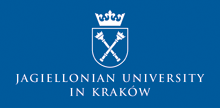Conveners
Thursday: Medical imaging
- Ewa Stępien (Jegiellonian University, Dept. of Medical Physics)
- Michael Waligórski (Institute of Nuclear Physics PAN in Krakow)
Thursday: Medical imaging
- Suleman Surti (University of Pennsylvania)
Positron emission tomography (PET) scanners generate in vivo images of radiolabeled pharmaceutical distribution and kinetics, providing a powerful window into metabolism and physiology. However, current PET scanners for humans cover only 20-25 cm of the body axially at any one time, which leads to long scan times, relatively high radiation dose, poor signal quality and largely limits their...
The current generation of commercial PET scanners has excellent performance and diagnostic image quality, but the system sensitivity and dynamic imaging capability are limited by the scanner’s axial length. In recent years there has been an interest in developing whole-body PET scanners with much longer AFOV that not only increase the system sensitivity but can also image the whole-body of a...
The aim of the SphynX project is to build and explore the potential of a new unique integrated High resolution Total Body Time-of-flight Positron Emission Tomography (PET2020) scanner as a research tool for physiology in plants, large animals and humas. The system is oriented towards visualizing and understanding molecular processes in large living subjects (1-2 m length and 65 cm diameter) ....
All currently used PET scanners are based on crystal scintillators readout, where detectors are placed radially in rings surrounding a patient's body. J-PET group is working on scanner utilizing plastic scintillators to detect gamma quanta. Since light attenuation of plastics is much lower than the one of crystals, modules with plastic scintillators can be orientated along patients body. First...
Total-body PET scanners impose elevated requirements on data processing systems. Considering significant increase of the number of data channels and the resolution of this data questions arise if the classic computing platforms are still suited for imaging.
Field Programmable Gate Arrays (FPGA) are relatively new devices that can break the hegemonie of CPUs and GPUs in high performance...
Abstract
Positron Annihilation Lifetime Spectroscopy (PALS) allow to examine structure of materials at nano and sub-nanometer level. This technique is based on the lifetime and production intensity of ortho-positronium atoms in free volumes of given structures. Recent studies shown it can be used for studies of biological structures [1-5] and morphometric imaging as proposed in patent [6]....
The Positron Annihilation Lifetime Spectroscopy (PALS) was used to investigate the uterine leiomyomatis, ovary, oviduct and normal tissues taken from patients after surgery, hysterectomy. The pilot studies have shown that a positron probe, commonly used in the PET imaging, may be useful in identifying not only the position of affected tisssue, but also the degree and type of these disease....
Two the most known techniques based on positron-electron annihilation are PET (Positron Emission Tomography) and PALS (Positron Annihilation Lifetime Spectroscopy).
PET is a commonly recognized diagnostic method enabling imaging of the metabolism of chosen substances in the living organism. The PET imaging is based on an annihilation of the positron emitted by radiofarmaceutical with an...
During the positron emission tomography about 40% of positrons annihilations occur through the creation of positronium which may be trapped within and between molecules. Positronium decays in the patient body are sensitive to the nanostructure and metabolism of the tissues. This phenomenon is not used in the present PET diagnostics, yet it is in principle possible to use environment modified...
STIR (Software for Tomographic Image Reconstruction) is Open Source software providing a Multi-Platform Object-Oriented framework for data manipulations in tomographic imaging. Currently, the emphasis is on image reconstruction in emission tomography (PET and SPECT). Motion correction and parametric imaging is also supported. STIR is implemented in C++ but provides both a Python and MATLAB...
Modern TOF-PET scanner systems require high-speed computing resources for efficient data processing, monitoring and image reconstruction. In this article we present the data flow and software architecture for the novel total-body TOF-PET scanner developed by the J-PET collaboration. The reconstruction framework, Monte Carlo simulations tools together with several software activities dedicated...
GATE is a Geant4 application dedicated to medical physics applications. This open-source software is developed by the international OpenGATE collaboration initially [1] for nuclear medicine (SPECT, PET). Since the release V6 [2], GATE was extended to a broader range of simulations in the field of medical physics, in particular for dosimetry applications [3]. This unique platform allows users...
In this presentation we provide a comparative studies of two image reconstruction algorithms for positron emission tomography (PET): a novel reconstruction method based on the concept of total variation (TV) regularization and a reference time-of-flight filtered back-projection (TOF-FBP) technique. The methods are validated using experimental data of the Jagiellonian-PET (J-PET) scanner from...
We report the results of a modified time-of-flight (TOF) filtered back projection (FBP) image reconstruction method, employed for the Jagiellonian PET (J-PET) scanners of differing geometries. Additional dimension imposed by TOF in projection space significantly reduces the number of coincidences per bin, which affects performance. However, high temporal resolution of J-PET substantiates...
Introduction
In 2016 the development of Total Body PET (TB-PET) system with a $2$ m long axial FOV at UCDavis (California) and a $70$ cm-$1,4$ m
long axial FOV at UPENN (Philadelphia) has been initiated and United imaging (together with UCDavis) has
recently launched the first Total Body PET system for clinical imaging (FDA approved).
**The aim of this work is to try to find a more cost...
Image reconstruction in PET tomography requires a good description of the detector response usually in the form of the system matrix or kernel. This is normally not possible to calculate exactly. One alternative is to use Monte-Carlo methods. However standard simulation software like Geant or GATE is to slow to obtain the system matrix of the detector with good accuracy in a reasonable time....

